Events
| Name | organizer | Where |
|---|---|---|
| MBCC “Doing Business with Mongolia seminar and Christmas Receptiom” Dec 10. 2025 London UK | MBCCI | London UK Goodman LLC |
NEWS
Mongolia seeks to grow tourism sector amid challenges www.channelnewsasia.com
Most of the groups that tour guide Ariun Bold leads in Mongolia are from neighbouring China.
“The mainland may have been cooped up for a longer period of time, so after the removal of restrictions, the uncles and aunties might want to travel abroad more,” said the 26-year-old.
Although she is Mongolian, Ms Bold, who is known as Xiao Ai to the tour groups, speaks fluent Mandarin, a language she picked up while studying in Shanghai, on a scholarship funded by the Chinese government.
Among the itinerary for tourists is a visit to the towering 40m-high equestrian statue of Genghis Khan, founder of the Mongol empire, which sits on the famous Mongolian steppe and a trip to the Gobi desert.
She believes more are curious about Mongolia after the country became part of China’s Belt and Road Initiative. The global infrastructure project is meant to improve China's connections with the rest of the world, in a 21st-century version of the Silk Road trading routes from China to the Middle East and onto Europe.
“When people talk about the Belt and Road, they will definitely think of Mongolia or these regions in Central Asia. After all, it was indeed a very important country at that time. It was in the 13th century, and Mongolia was a trading city,” said Ms Bold.
BOOSTING TOURISM SECTOR
The visitors come at a time when Mongolia is looking to boost its tourism sector, as it looks to diversify its economy beyond its export-oriented mining industry.
In 2019, prior to the COVID-19 pandemic, 570,000 foreign tourists visited Mongolia. A third of them came from China.
As of October last year, this number surpassed 600,000, the country’s tourism revenue stood at more than US$1 billion.
China, Russia and South Korea are Mongolia’s biggest source of tourists.
“They are our neighbours and relations are better now. We mainly wanted to see the steppes. We are on a 19-day journey, passing through Mongolia, reaching Moscow. It is a long journey but I like it,” said 68-year-old tourist Chen Nanqun, who hails from Nanjing city in eastern China.
“That adventure style outdoors holiday is becoming an increasing trend amongst young Chinese professionals who want to go and experience something a bit different. There's also the wellness aspect, that's also starting to develop in Mongolia,” said Mr Chris Devonshire-Ellis, an investment consultant with experience in the region.
CHALLENGES TO ADDRESS
However, Mr Devonshire-Ellis noted that there are challenges to be addressed, including historical sensitivities between China and Mongolia.
Also, about 30 per cent of the Mongolian population are still nomadic herders living a traditional way of life.
Mongolia is not a hugely rich country and given a strong sense of culture, are at times reluctant to develop, he said.
“You really only have one big city, Ulaanbaatar, which in the winter … becomes rather polluted. (It) has Soviet-era coal-burning furnaces to heat the population and that creates significant pollution during the winter,” said Mr Devonshire-Ellis, chairman of Dezan Shira & Associates.
A balance among development, preserving culture and the environment is something that experts say will have to be struck by Mongolia, especially as climate change has caused desertification and other changes.
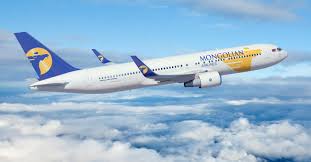
Airbus lands safely in Mongolia after technical jitters on Vietnam's Phu Quoc www.tuoitrenews.vn
After technical issues were resolved at Phu Quoc International Airport on Phu Quoc Island off Kien Giang Province in southern Vietnam, an Airbus A330-202 with registration number EAZ212, operated by Eznis Airways, took off at 1:37 pm on Thursday, with 200 passengers bound for Mongolia.
Nguyen Minh Dong, director of Phu Quoc International Airport, said on Thursday that the flight departed the airport at about 3:00 am on Wednesday.
However, the aircraft encountered a technical problem and had to revert to a holding pattern for three hours.
It later landed safely at Phu Quoc International Airport.
Airport authorities coordinated with relevant agencies to take the flight’s passengers to local hotels so that they could rest before boarding the flight again.
After the issues were resolved, the flight took off at 1:37 pm on Thursday and arrived in Mongolia at about 7:30 pm the same day.

Gobi company to provide Barcelona club with Mongolian cashmere www.news.mn
Company Gobi, one of the largest cashmere brands in Mongolia, will officially cooperate with the Barcelona club.
Representatives of Mongolia met with President of the Barcelona club Joan Laporta and other officials this month. The sides agreed to cooperate, with Gobi company providing the club with sweaters, scarves, hats and gloves.
Barcelona, also known as Barça, is a Spanish professional football club from the city of the same name, the most titled club in Spain and the top 5 championships.
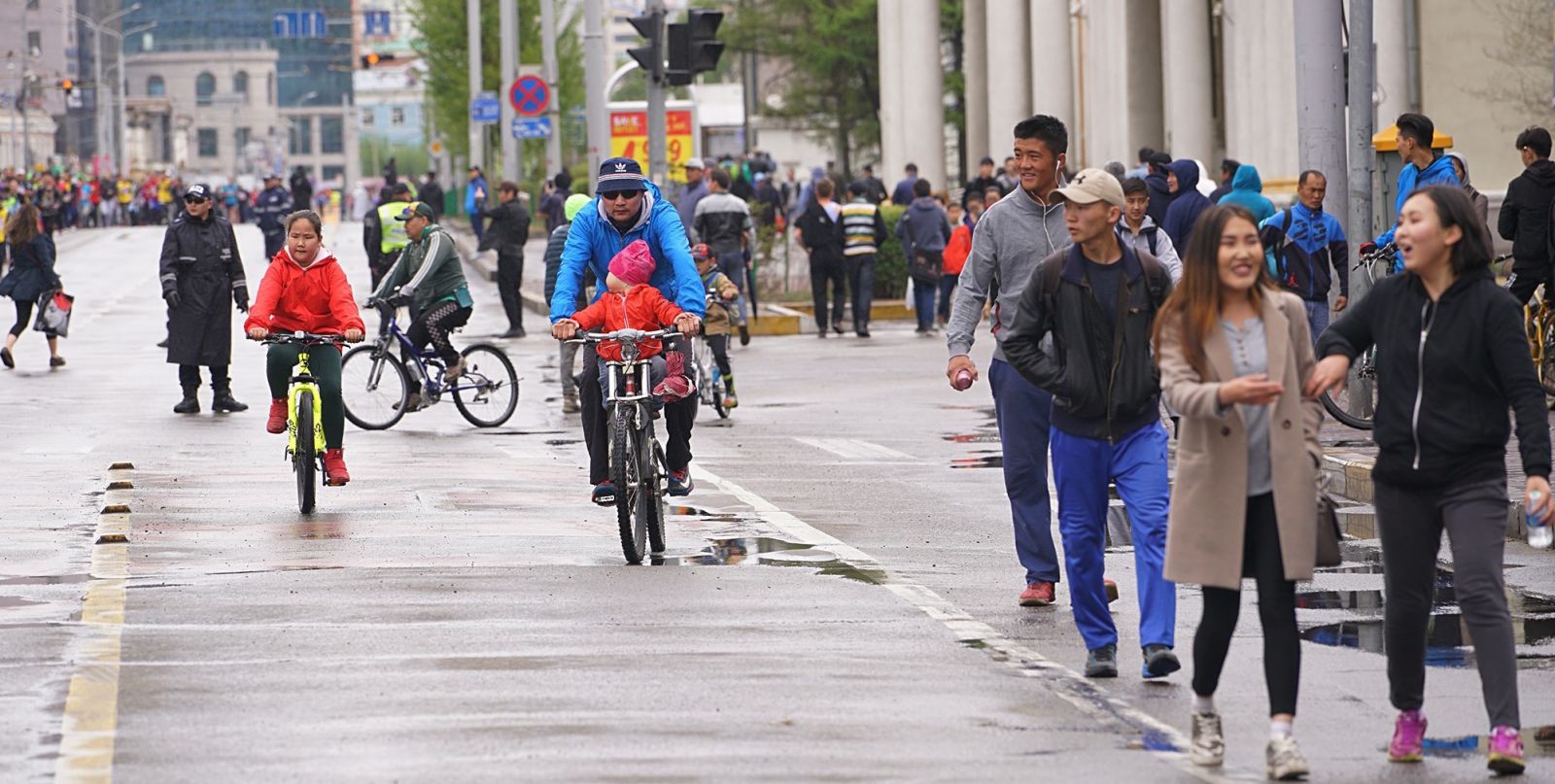
Minimum wage of MNT 660 thousand effective www.gogo.mn
According to Resolution No.12 dated October 13, 2023 of the tripartite National Committee for Labor and Social Partnership, the minimum wage of Mongolia was increased by 20% and became MNT 660,000. The decision is effective starting from January 1, 2024.
In Mongolia, over 100,000 citizens get the salary of above amount.
As defined in the International Labor Organization, “The minimum amount of remuneration that an employer is required to pay wage earners for the work performed during a given period, which cannot be reduced by collective agreement or an individual contract, and the purpose of minimum wages is to protect workers against unduly low pay”.
According to the law on Minimum Wage of Mongolia, the Minimum wage shall mean the minimum limit of the basic hourly remuneration /wage/ that should be observed in general which was determined by the competent person in order to protect the legal interests of employees and workers who work under labor contracts, hired work contracts, and other similar contracts for simple jobs that do not require specific education or special skills.
4.2.The minimum wage shall be determined or changed by taking into account of the following factors:
Changes in the minimum standard of living of the population;
Appropriate ratio of labor productivity and average salary;
The minimum amount of full pension to be provided by the social insurance fund;
Economic growth and employment level;
Inflation rate;
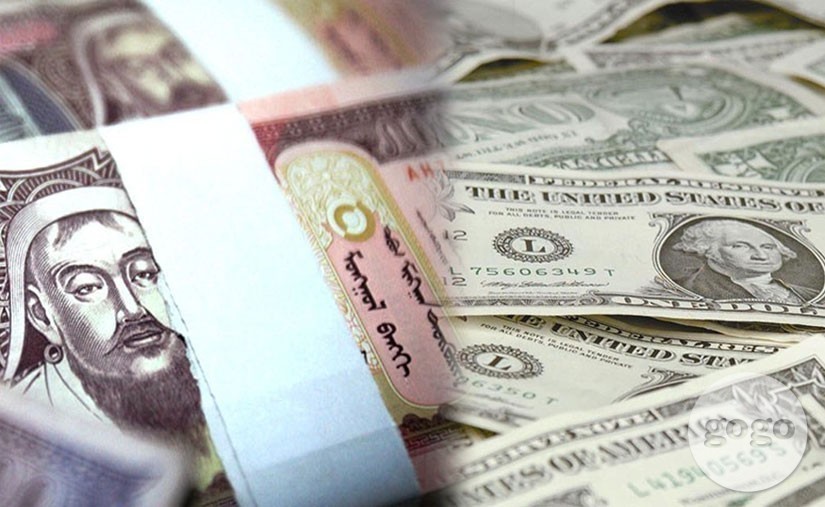
Development Bank of Mongolia Maintains a Stable Credit Rating www.montsame.mn
The Development Bank of Mongolia successfully paid off USD 500 million of Eurobonds and JPY 30 billion of 'Samurai' bonds on time, using its own resources. This serves as the foundation for maintaining the bank's credit rating assessed by an international credit rating agency.
Specifically, the international credit rating agency “Moody's” reported its decision to maintain the long-term credit rating of the Development Bank of Mongolia at the B3 (stable) level and elevate the bank's Baseline Credit Assessment from CAA2 to CAA1. This information was reported by the Development Bank of Mongolia.
"Moody's" agency had monitored the possible downgrade of the credit rating since October 2023, assessing potential performance risks associated with the repayment of two bonds that matured in the fourth quarter of 2023.
"Moody's" agency emphasized that the Development Bank of Mongolia, as a bank that implements the policies of the Government of Mongolia within the framework of its obligations under the law, has maintained a stable credit rating.
The International Agency's assessment has an important effect on attracting long-term and low-cost funds from the international market in the future as it ascertains that the Development Bank successfully implemented its obligations to international investors.
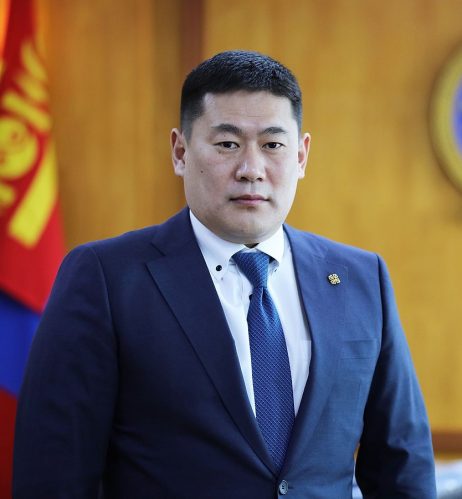
Prime Minister of Mongolia to Participate in World Economic Forum www.montsame.mn
The 54th Annual Meeting of the World Economic Forum (WEF) will take place under the theme “Rebuilding Trust” in Davos-Klosters, Switzerland, on January 15-19, 2024. Prime Minister of Mongolia Oyun-Erdene Luvsannamsrai will participate in the Forum.
The World Economic Forum, founded in 1971 by Swiss economist and business professor Klaus Schwab, convenes leaders from diverse fields, such as politics, business, environment, and technology, to address pressing global challenges and determine future development trends and policies.
Dignitaries who took part in the WEF from Mongolia are:
Foreign Minister of Mongolia B. Battsetseg – 2023
President of Mongolia Kh. Battulga – 2020
Minister of Mining and Heavy Industry D. Sumiyabazar – 2019
Foreign Minister of Mongolia D. Tsogtbaatar – 2018
President of Mongolia Ts. Elbegdorj – 2017
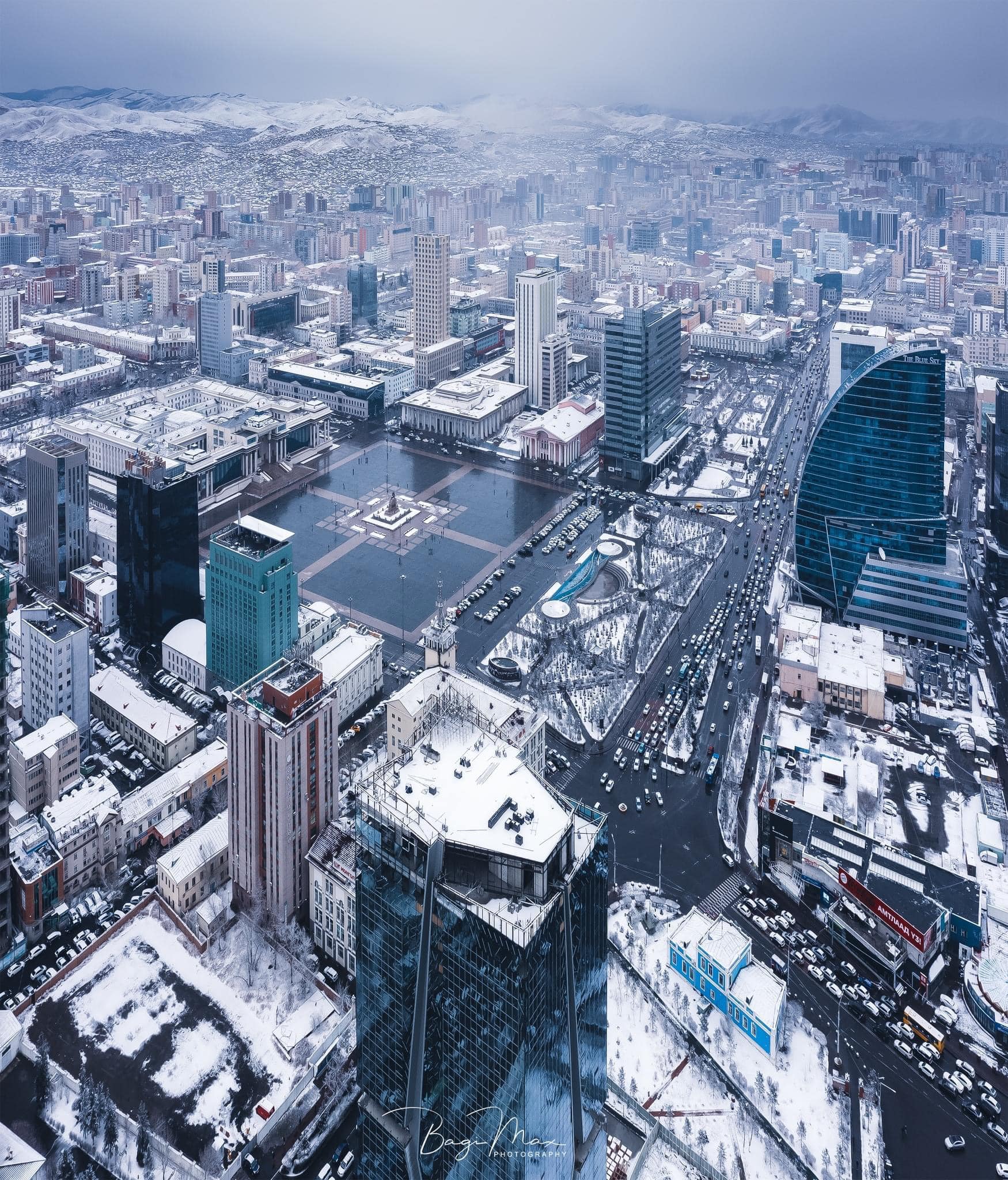
Law on Public-Private Partnership Comes into Force www.montsame.mn
The Law on Public-Private Partnership, previously regulated by the Law on Concession, came into force on January 1, 2024.
According to Minister of Finance Javkhlan Bold, the main goal of the Law on Public-Private Partnership is that the government will not compete with the private sector, but will provide long-term support to the implementation of infrastructure projects.
Deputy Minister of Economy and Development Tuvdendorj Gantumur highlighted multiple gains as a result of the implementation of the Law on Public-Private Partnership. These include:
· Promotion of competition in the public services sector by attracting the private sector,
· Introduction of financial instruments to meet growing needs,
· Reduction of the budget burden in the long term
"To improve Mongolia's economic competitiveness in the world, many projects aimed at improving and accelerating the development of infrastructure such as power plants, roads, railways, and public transport are included in Mongolia's medium-term development policy document "New Revival Policy." It requires improving the business environment and state potential through approving new laws and revising or amending laws. In this context the Law on Public-Private Partnership was approved, ” stated Deputy Minister G. Tuvdendorj.
As Deputy Minister G. Tuvdendorj stressed by eliminating violations of financial discipline, not properly regulated in the Law on Concession, the Law on Public-Private Partnership brings the legislative framework into line with international standards.
Under the Law on Public-Private Partnership, government organizations will not compete with private sector organizations.
Under the Public-Private Partnership Law, the private sector will be supported in 7 areas and the government's actions must be clear, transparent, and concise. Deputy Minister G. Tuvdendorj emphasized that by signing a long-term contract the government guarantees the fulfillment of all obligations under the contract.
Under the Law on Public-Private Partnership, the government will support the projects that have completed the feasibility study and meet the high requirements of the government.
The Public-Private Partnership Law regulates:
- providing land for private construction and investment
-special permit issuance
- solving price issues, especially price liberalization in the energy and civil aviation sectors
- development based on economic and business principles
- providing opportunities to attract private sector investment
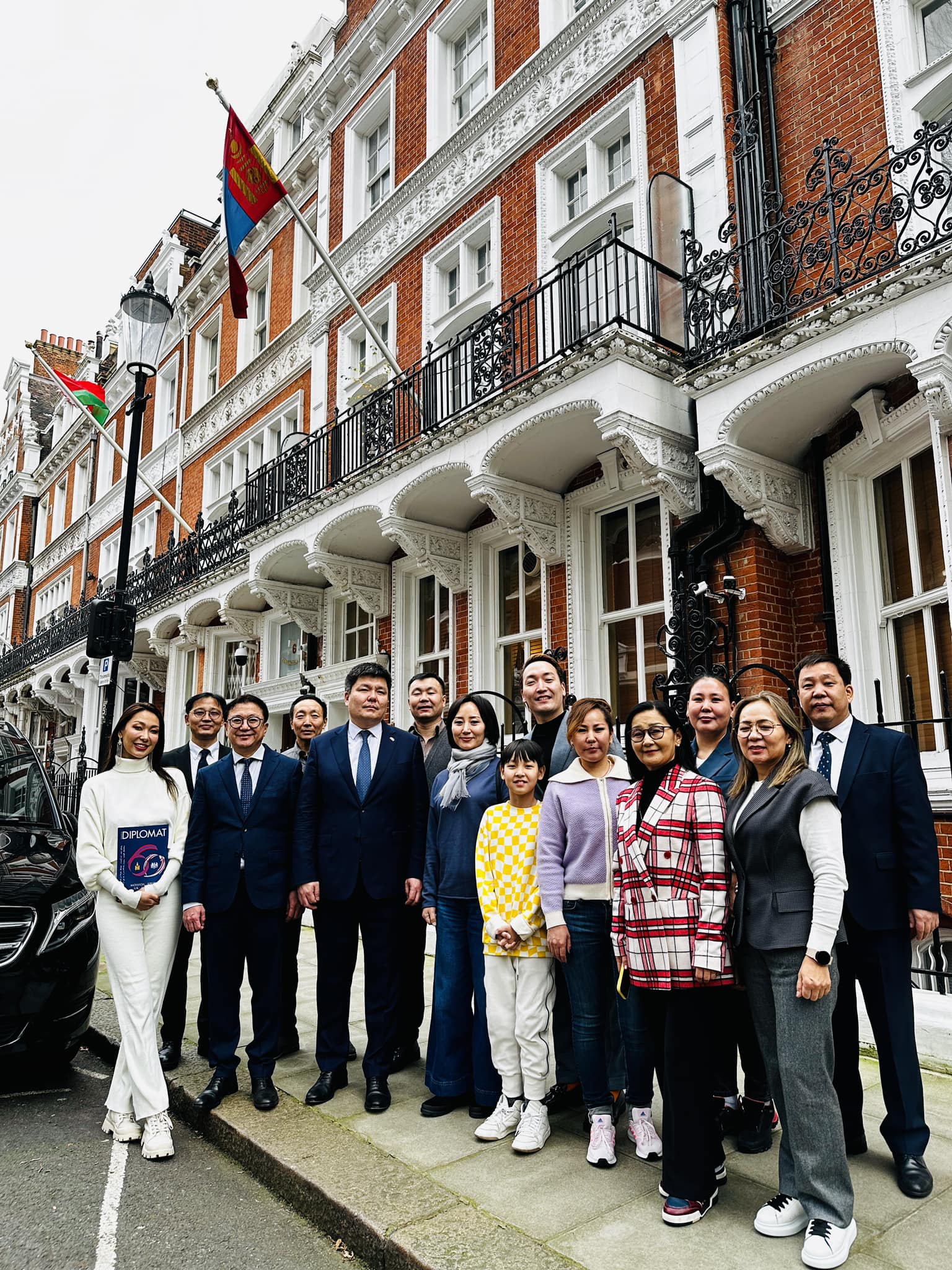
MBD business group completed its mission in London UK www.mongolianbusinessdatabase.com
MBD (Mongolian Business Database NGO) successfully hosted its regular Mongolian business group mission to the Mongolian-British Chamber of Commerce's Christmas Reception at the House of Commons on Dec 18 and business program between 16-23 Dec 2023 in London, UK.
Mr. B. Enkhsukh, Mongolian Ambassador to the UK welcomed the business delegation at the Embassy and the business representative met with British investors and business people during the program.
This time 20 business delegates joined the group including Mr.Munkhjargal Director of Cashmere Holding (Eermel/Evseg brand) one of the 2 leading cashmere manufacturers of Mongolia who is sponsoring the event in London, Mrs.Baigalmaa Co-Founder of Gazar Shim JSV, one of the leading food processing manufacturer of Mongolia, Mr.Gan-Erdene, Founder and Director of Geocad, one of the most potential geodesy company which implemented the potential projects such as OT and new airport-related work, Mr.Chinzorig Chairman of Board of Tandem Investment, one of the leading Japanese invested firms in Mongolia on Fintech and Mongolian drillers in Japan projects and Mrs. Badamgerel Founder of Andra Academy (Miss and top model of Mongolia who is well known social influencer).
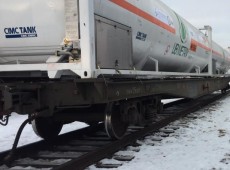
Mongolia exports 4.3 mln barrels of crude oil by November www.xinhuanet.com
Mongolia exported a total of 4.34 million barrels of crude oil in the first 11 months of 2023, said the Ministry of Mining and Heavy Industry on Tuesday.
The figure is a two-fold increase compared with the same period last year, the ministry said in a statement.
Mining is the most important sector of Mongolia's economy. The Asian country is rich in natural resources such as gold, iron, coal and copper.
However, the country does not have a refinery yet. The first oil refinery is under construction in the southeastern province of Dornogovi, and expected to be put into production in 2027.
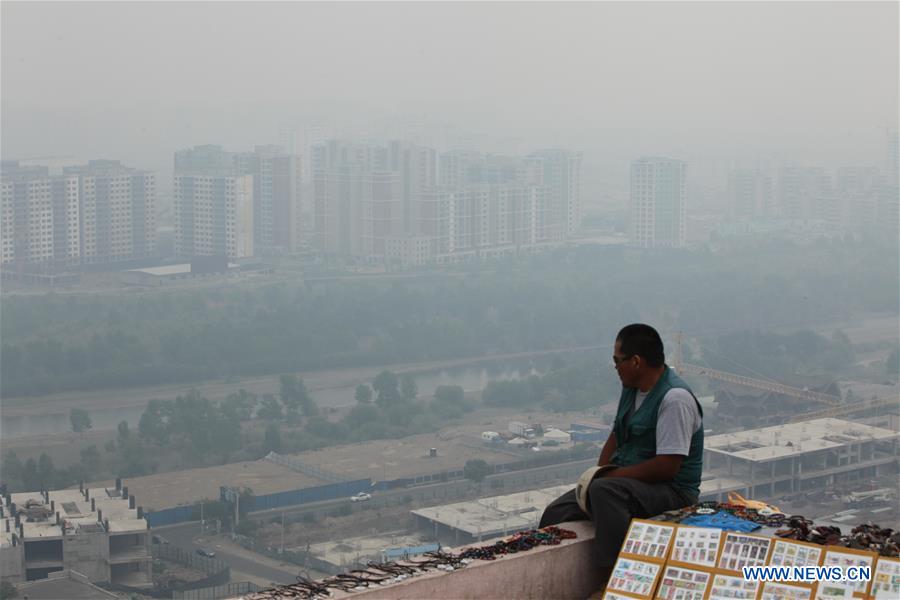
Climate of Opportunity: Sustainable Mining in Mongolia www.blogs.adb.org
Mongolia’s economy can lead the charge to net-zero and help other countries move from fossil fuels to clean energy if swift action is taken to tap its rare earth deposits.
Ambitious global climate policies and a shift towards renewable energies are driving an escalating demand for resources like rare earth elements and other metals, crucial for renewable energy technologies. However, the steady supply of these critical minerals remains uncertain.
This creates a significant opportunity for Mongolia, which has an economy highly dependent on natural resource extraction. Mining currently accounts for about one-quarter of gross domestic product, predominantly from exports of coal, copper, and iron ore. Its mineral wealth is valued at $1 trillion–$3 trillion, including copper, fluorspar, gold, iron, tungsten, uranium, and zinc (as well as coal and oil).
How can Mongolia develop a competitive, environmentally sustainable export-oriented mining industry that can provide sustainable livelihoods to locals and fuel for the global race to net-zero?
First, we need to know where those rare earth elements are located in Mongolia’s vast geography. Most of the geological surveys undertaken so far are electromagnetic at a scale of 1:200 kilometers, which is insufficient to attract investors to spend millions of dollars on drilling holes in the earth’s crust in the hope of hitting mineral veins. Geological surveys need to be undertaken with much finer granularity, and for that, we need investments.
Which leads us to the next issue: Suitable investment frameworks. License fees for exploration were previously too high and deterred potential international investors. Even the transfer of a license from one company to another was taxed extensively. However, a new investment law addresses such issues from the past and puts Mongolia on the path to becoming more attractive to investors. This is an important step forward and shows Mongolia’s commitment to attracting investment.
Mongolia shows that there is an opportunity for countries to accelerate economic growth and sustainable development if they develop industries that provide services, technologies, and resources that help advance the global transition to low emission technologies.
The third ingredient for success is processing capacity, as rare earth minerals in many instances require a first stage processing prior to export. Such capacity is rare just like the elements, and currently concentrated in just a handful of countries globally. Strengthening local knowledge and technical capacity is therefore critical.
A new research partnership with the Republic of Korea can start to lead the way together with the Ministry of Mining and Heavy Industries, while the Ministry of Economy and Development is creating a new policy research institution to be launched in 2024, which can help look at relevant policy and enabling environments that are conducive to catalyzing investments into the sector. A commodity exchange can also help steer the market towards climate-smart mining.
Fourth, the rare earth minerals have to be exported. One possible option is to follow the case of uranium, where France has an off-take agreement with the People’s Republic of China. Under this agreement, the People’s Republic of China purchases uranium from Mongolia, transports it through its own country and sells it to France. Another option would be to look at airborne transport, which can be economically viable for some of the more costly rare earth minerals.
Most importantly, however, there has to be a good relationship with local communities, accompanied by comprehensive environmental and social frameworks that avoid unsustainable water use and pollution by mining activities, ensure that local communities benefit from mining income, including for education, health programs, and sustainable livelihoods, and that revenues are processed in a transparent manner. Involving multilateral and non-government organizations can be helpful in this regard, to ensure the application of internationally accepted safeguards.
Mongolia shows that there is an opportunity for countries to accelerate economic growth and sustainable development if they develop industries that provide services, technologies, and resources that help advance the global transition to low emission technologies. While intensifying climate change wreaks havoc on economies and livelihoods that are battered by extreme weather events, change can also have economic ‘upsides’ for those who plan ahead.
This blog post was based on research conducted for the technical assistance project, Mongolia: Climate-Smart Mining for a New Climate Economy.
BY Dustin S. Schinn
Climate Change Specialist, ADB Climate Change and Sustainable Development Department
- «
- 1
- 2
- 3
- 4
- 5
- 6
- 7
- 8
- 9
- 10
- 11
- 12
- 13
- 14
- 15
- 16
- 17
- 18
- 19
- 20
- 21
- 22
- 23
- 24
- 25
- 26
- 27
- 28
- 29
- 30
- 31
- 32
- 33
- 34
- 35
- 36
- 37
- 38
- 39
- 40
- 41
- 42
- 43
- 44
- 45
- 46
- 47
- 48
- 49
- 50
- 51
- 52
- 53
- 54
- 55
- 56
- 57
- 58
- 59
- 60
- 61
- 62
- 63
- 64
- 65
- 66
- 67
- 68
- 69
- 70
- 71
- 72
- 73
- 74
- 75
- 76
- 77
- 78
- 79
- 80
- 81
- 82
- 83
- 84
- 85
- 86
- 87
- 88
- 89
- 90
- 91
- 92
- 93
- 94
- 95
- 96
- 97
- 98
- 99
- 100
- 101
- 102
- 103
- 104
- 105
- 106
- 107
- 108
- 109
- 110
- 111
- 112
- 113
- 114
- 115
- 116
- 117
- 118
- 119
- 120
- 121
- 122
- 123
- 124
- 125
- 126
- 127
- 128
- 129
- 130
- 131
- 132
- 133
- 134
- 135
- 136
- 137
- 138
- 139
- 140
- 141
- 142
- 143
- 144
- 145
- 146
- 147
- 148
- 149
- 150
- 151
- 152
- 153
- 154
- 155
- 156
- 157
- 158
- 159
- 160
- 161
- 162
- 163
- 164
- 165
- 166
- 167
- 168
- 169
- 170
- 171
- 172
- 173
- 174
- 175
- 176
- 177
- 178
- 179
- 180
- 181
- 182
- 183
- 184
- 185
- 186
- 187
- 188
- 189
- 190
- 191
- 192
- 193
- 194
- 195
- 196
- 197
- 198
- 199
- 200
- 201
- 202
- 203
- 204
- 205
- 206
- 207
- 208
- 209
- 210
- 211
- 212
- 213
- 214
- 215
- 216
- 217
- 218
- 219
- 220
- 221
- 222
- 223
- 224
- 225
- 226
- 227
- 228
- 229
- 230
- 231
- 232
- 233
- 234
- 235
- 236
- 237
- 238
- 239
- 240
- 241
- 242
- 243
- 244
- 245
- 246
- 247
- 248
- 249
- 250
- 251
- 252
- 253
- 254
- 255
- 256
- 257
- 258
- 259
- 260
- 261
- 262
- 263
- 264
- 265
- 266
- 267
- 268
- 269
- 270
- 271
- 272
- 273
- 274
- 275
- 276
- 277
- 278
- 279
- 280
- 281
- 282
- 283
- 284
- 285
- 286
- 287
- 288
- 289
- 290
- 291
- 292
- 293
- 294
- 295
- 296
- 297
- 298
- 299
- 300
- 301
- 302
- 303
- 304
- 305
- 306
- 307
- 308
- 309
- 310
- 311
- 312
- 313
- 314
- 315
- 316
- 317
- 318
- 319
- 320
- 321
- 322
- 323
- 324
- 325
- 326
- 327
- 328
- 329
- 330
- 331
- 332
- 333
- 334
- 335
- 336
- 337
- 338
- 339
- 340
- 341
- 342
- 343
- 344
- 345
- 346
- 347
- 348
- 349
- 350
- 351
- 352
- 353
- 354
- 355
- 356
- 357
- 358
- 359
- 360
- 361
- 362
- 363
- 364
- 365
- 366
- 367
- 368
- 369
- 370
- 371
- 372
- 373
- 374
- 375
- 376
- 377
- 378
- 379
- 380
- 381
- 382
- 383
- 384
- 385
- 386
- 387
- 388
- 389
- 390
- 391
- 392
- 393
- 394
- 395
- 396
- 397
- 398
- 399
- 400
- 401
- 402
- 403
- 404
- 405
- 406
- 407
- 408
- 409
- 410
- 411
- 412
- 413
- 414
- 415
- 416
- 417
- 418
- 419
- 420
- 421
- 422
- 423
- 424
- 425
- 426
- 427
- 428
- 429
- 430
- 431
- 432
- 433
- 434
- 435
- 436
- 437
- 438
- 439
- 440
- 441
- 442
- 443
- 444
- 445
- 446
- 447
- 448
- 449
- 450
- 451
- 452
- 453
- 454
- 455
- 456
- 457
- 458
- 459
- 460
- 461
- 462
- 463
- 464
- 465
- 466
- 467
- 468
- 469
- 470
- 471
- 472
- 473
- 474
- 475
- 476
- 477
- 478
- 479
- 480
- 481
- 482
- 483
- 484
- 485
- 486
- 487
- 488
- 489
- 490
- 491
- 492
- 493
- 494
- 495
- 496
- 497
- 498
- 499
- 500
- 501
- 502
- 503
- 504
- 505
- 506
- 507
- 508
- 509
- 510
- 511
- 512
- 513
- 514
- 515
- 516
- 517
- 518
- 519
- 520
- 521
- 522
- 523
- 524
- 525
- 526
- 527
- 528
- 529
- 530
- 531
- 532
- 533
- 534
- 535
- 536
- 537
- 538
- 539
- 540
- 541
- 542
- 543
- 544
- 545
- 546
- 547
- 548
- 549
- 550
- 551
- 552
- 553
- 554
- 555
- 556
- 557
- 558
- 559
- 560
- 561
- 562
- 563
- 564
- 565
- 566
- 567
- 568
- 569
- 570
- 571
- 572
- 573
- 574
- 575
- 576
- 577
- 578
- 579
- 580
- 581
- 582
- 583
- 584
- 585
- 586
- 587
- 588
- 589
- 590
- 591
- 592
- 593
- 594
- 595
- 596
- 597
- 598
- 599
- 600
- 601
- 602
- 603
- 604
- 605
- 606
- 607
- 608
- 609
- 610
- 611
- 612
- 613
- 614
- 615
- 616
- 617
- 618
- 619
- 620
- 621
- 622
- 623
- 624
- 625
- 626
- 627
- 628
- 629
- 630
- 631
- 632
- 633
- 634
- 635
- 636
- 637
- 638
- 639
- 640
- 641
- 642
- 643
- 644
- 645
- 646
- 647
- 648
- 649
- 650
- 651
- 652
- 653
- 654
- 655
- 656
- 657
- 658
- 659
- 660
- 661
- 662
- 663
- 664
- 665
- 666
- 667
- 668
- 669
- 670
- 671
- 672
- 673
- 674
- 675
- 676
- 677
- 678
- 679
- 680
- 681
- 682
- 683
- 684
- 685
- 686
- 687
- 688
- 689
- 690
- 691
- 692
- 693
- 694
- 695
- 696
- 697
- 698
- 699
- 700
- 701
- 702
- 703
- 704
- 705
- 706
- 707
- 708
- 709
- 710
- 711
- 712
- 713
- 714
- 715
- 716
- 717
- 718
- 719
- 720
- 721
- 722
- 723
- 724
- 725
- 726
- 727
- 728
- 729
- 730
- 731
- 732
- 733
- 734
- 735
- 736
- 737
- 738
- 739
- 740
- 741
- 742
- 743
- 744
- 745
- 746
- 747
- 748
- 749
- 750
- 751
- 752
- 753
- 754
- 755
- 756
- 757
- 758
- 759
- 760
- 761
- 762
- 763
- 764
- 765
- 766
- 767
- 768
- 769
- 770
- 771
- 772
- 773
- 774
- 775
- 776
- 777
- 778
- 779
- 780
- 781
- 782
- 783
- 784
- 785
- 786
- 787
- 788
- 789
- 790
- 791
- 792
- 793
- 794
- 795
- 796
- 797
- 798
- 799
- 800
- 801
- 802
- 803
- 804
- 805
- 806
- 807
- 808
- 809
- 810
- 811
- 812
- 813
- 814
- 815
- 816
- 817
- 818
- 819
- 820
- 821
- 822
- 823
- 824
- 825
- 826
- 827
- 828
- 829
- 830
- 831
- 832
- 833
- 834
- 835
- 836
- 837
- 838
- 839
- 840
- 841
- 842
- 843
- 844
- 845
- 846
- 847
- 848
- 849
- 850
- 851
- 852
- 853
- 854
- 855
- 856
- 857
- 858
- 859
- 860
- 861
- 862
- 863
- 864
- 865
- 866
- 867
- 868
- 869
- 870
- 871
- 872
- 873
- 874
- 875
- 876
- 877
- 878
- 879
- 880
- 881
- 882
- 883
- 884
- 885
- 886
- 887
- 888
- 889
- 890
- 891
- 892
- 893
- 894
- 895
- 896
- 897
- 898
- 899
- 900
- 901
- 902
- 903
- 904
- 905
- 906
- 907
- 908
- 909
- 910
- 911
- 912
- 913
- 914
- 915
- 916
- 917
- 918
- 919
- 920
- 921
- 922
- 923
- 924
- 925
- 926
- 927
- 928
- 929
- 930
- 931
- 932
- 933
- 934
- 935
- 936
- 937
- 938
- 939
- 940
- 941
- 942
- 943
- 944
- 945
- 946
- 947
- 948
- 949
- 950
- 951
- 952
- 953
- 954
- 955
- 956
- 957
- 958
- 959
- 960
- 961
- 962
- 963
- 964
- 965
- 966
- 967
- 968
- 969
- 970
- 971
- 972
- 973
- 974
- 975
- 976
- 977
- 978
- 979
- 980
- 981
- 982
- 983
- 984
- 985
- 986
- 987
- 988
- 989
- 990
- 991
- 992
- 993
- 994
- 995
- 996
- 997
- 998
- 999
- 1000
- 1001
- 1002
- 1003
- 1004
- 1005
- 1006
- 1007
- 1008
- 1009
- 1010
- 1011
- 1012
- 1013
- 1014
- 1015
- 1016
- 1017
- 1018
- 1019
- 1020
- 1021
- 1022
- 1023
- 1024
- 1025
- 1026
- 1027
- 1028
- 1029
- 1030
- 1031
- 1032
- 1033
- 1034
- 1035
- 1036
- 1037
- 1038
- 1039
- 1040
- 1041
- 1042
- 1043
- 1044
- 1045
- 1046
- 1047
- 1048
- 1049
- 1050
- 1051
- 1052
- 1053
- 1054
- 1055
- 1056
- 1057
- 1058
- 1059
- 1060
- 1061
- 1062
- 1063
- 1064
- 1065
- 1066
- 1067
- 1068
- 1069
- 1070
- 1071
- 1072
- 1073
- 1074
- 1075
- 1076
- 1077
- 1078
- 1079
- 1080
- 1081
- 1082
- 1083
- 1084
- 1085
- 1086
- 1087
- 1088
- 1089
- 1090
- 1091
- 1092
- 1093
- 1094
- 1095
- 1096
- 1097
- 1098
- 1099
- 1100
- 1101
- 1102
- 1103
- 1104
- 1105
- 1106
- 1107
- 1108
- 1109
- 1110
- 1111
- 1112
- 1113
- 1114
- 1115
- 1116
- 1117
- 1118
- 1119
- 1120
- 1121
- 1122
- 1123
- 1124
- 1125
- 1126
- 1127
- 1128
- 1129
- 1130
- 1131
- 1132
- 1133
- 1134
- 1135
- 1136
- 1137
- 1138
- 1139
- 1140
- 1141
- 1142
- 1143
- 1144
- 1145
- 1146
- 1147
- 1148
- 1149
- 1150
- 1151
- 1152
- 1153
- 1154
- 1155
- 1156
- 1157
- 1158
- 1159
- 1160
- 1161
- 1162
- 1163
- 1164
- 1165
- 1166
- 1167
- 1168
- 1169
- 1170
- 1171
- 1172
- 1173
- 1174
- 1175
- 1176
- 1177
- 1178
- 1179
- 1180
- 1181
- 1182
- 1183
- 1184
- 1185
- 1186
- 1187
- 1188
- 1189
- 1190
- 1191
- 1192
- 1193
- 1194
- 1195
- 1196
- 1197
- 1198
- 1199
- 1200
- 1201
- 1202
- 1203
- 1204
- 1205
- 1206
- 1207
- 1208
- 1209
- 1210
- 1211
- 1212
- 1213
- 1214
- 1215
- 1216
- 1217
- 1218
- 1219
- 1220
- 1221
- 1222
- 1223
- 1224
- 1225
- 1226
- 1227
- 1228
- 1229
- 1230
- 1231
- 1232
- 1233
- 1234
- 1235
- 1236
- 1237
- 1238
- 1239
- 1240
- 1241
- 1242
- 1243
- 1244
- 1245
- 1246
- 1247
- 1248
- 1249
- 1250
- 1251
- 1252
- 1253
- 1254
- 1255
- 1256
- 1257
- 1258
- 1259
- 1260
- 1261
- 1262
- 1263
- 1264
- 1265
- 1266
- 1267
- 1268
- 1269
- 1270
- 1271
- 1272
- 1273
- 1274
- 1275
- 1276
- 1277
- 1278
- 1279
- 1280
- 1281
- 1282
- 1283
- 1284
- 1285
- 1286
- 1287
- 1288
- 1289
- 1290
- 1291
- 1292
- 1293
- 1294
- 1295
- 1296
- 1297
- 1298
- 1299
- 1300
- 1301
- 1302
- 1303
- 1304
- 1305
- 1306
- 1307
- 1308
- 1309
- 1310
- 1311
- 1312
- 1313
- 1314
- 1315
- 1316
- 1317
- 1318
- 1319
- 1320
- 1321
- 1322
- 1323
- 1324
- 1325
- 1326
- 1327
- 1328
- 1329
- 1330
- 1331
- 1332
- 1333
- 1334
- 1335
- 1336
- 1337
- 1338
- 1339
- 1340
- 1341
- 1342
- 1343
- 1344
- 1345
- 1346
- 1347
- 1348
- 1349
- 1350
- 1351
- 1352
- 1353
- 1354
- 1355
- 1356
- 1357
- 1358
- 1359
- 1360
- 1361
- 1362
- 1363
- 1364
- 1365
- 1366
- 1367
- 1368
- 1369
- 1370
- 1371
- 1372
- 1373
- 1374
- 1375
- 1376
- 1377
- 1378
- 1379
- 1380
- 1381
- 1382
- 1383
- 1384
- 1385
- 1386
- 1387
- 1388
- 1389
- 1390
- 1391
- 1392
- 1393
- 1394
- 1395
- 1396
- 1397
- 1398
- 1399
- 1400
- 1401
- 1402
- 1403
- 1404
- 1405
- 1406
- 1407
- 1408
- 1409
- 1410
- 1411
- 1412
- 1413
- 1414
- 1415
- 1416
- 1417
- 1418
- 1419
- 1420
- 1421
- 1422
- 1423
- 1424
- 1425
- 1426
- 1427
- 1428
- 1429
- 1430
- 1431
- 1432
- 1433
- 1434
- 1435
- 1436
- 1437
- 1438
- 1439
- 1440
- 1441
- 1442
- 1443
- 1444
- 1445
- 1446
- 1447
- 1448
- 1449
- 1450
- 1451
- 1452
- 1453
- 1454
- 1455
- 1456
- 1457
- 1458
- 1459
- 1460
- 1461
- 1462
- 1463
- 1464
- 1465
- 1466
- 1467
- 1468
- 1469
- 1470
- 1471
- 1472
- 1473
- 1474
- 1475
- 1476
- 1477
- 1478
- 1479
- 1480
- 1481
- 1482
- 1483
- 1484
- 1485
- 1486
- 1487
- 1488
- 1489
- 1490
- 1491
- 1492
- 1493
- 1494
- 1495
- 1496
- 1497
- 1498
- 1499
- 1500
- 1501
- 1502
- 1503
- 1504
- 1505
- 1506
- 1507
- 1508
- 1509
- 1510
- 1511
- 1512
- 1513
- 1514
- 1515
- 1516
- 1517
- 1518
- 1519
- 1520
- 1521
- 1522
- 1523
- 1524
- 1525
- 1526
- 1527
- 1528
- 1529
- 1530
- 1531
- 1532
- 1533
- 1534
- 1535
- 1536
- 1537
- 1538
- 1539
- 1540
- 1541
- 1542
- 1543
- 1544
- 1545
- 1546
- 1547
- 1548
- 1549
- 1550
- 1551
- 1552
- 1553
- 1554
- 1555
- 1556
- 1557
- 1558
- 1559
- 1560
- 1561
- 1562
- 1563
- 1564
- 1565
- 1566
- 1567
- 1568
- 1569
- 1570
- 1571
- 1572
- 1573
- 1574
- 1575
- 1576
- 1577
- 1578
- 1579
- 1580
- 1581
- 1582
- 1583
- 1584
- 1585
- 1586
- 1587
- 1588
- 1589
- 1590
- 1591
- 1592
- 1593
- 1594
- 1595
- 1596
- 1597
- 1598
- 1599
- 1600
- 1601
- 1602
- 1603
- 1604
- 1605
- 1606
- 1607
- 1608
- 1609
- 1610
- 1611
- 1612
- 1613
- 1614
- 1615
- 1616
- 1617
- 1618
- 1619
- 1620
- 1621
- 1622
- 1623
- 1624
- 1625
- 1626
- 1627
- 1628
- 1629
- 1630
- 1631
- 1632
- 1633
- 1634
- 1635
- 1636
- 1637
- 1638
- 1639
- 1640
- 1641
- 1642
- 1643
- 1644
- 1645
- 1646
- 1647
- 1648
- 1649
- 1650
- 1651
- 1652
- 1653
- 1654
- 1655
- 1656
- 1657
- 1658
- 1659
- 1660
- 1661
- 1662
- 1663
- 1664
- 1665
- 1666
- 1667
- 1668
- 1669
- 1670
- 1671
- 1672
- 1673
- 1674
- 1675
- 1676
- 1677
- 1678
- 1679
- 1680
- 1681
- 1682
- 1683
- 1684
- 1685
- 1686
- 1687
- 1688
- 1689
- 1690
- 1691
- 1692
- 1693
- 1694
- 1695
- »






